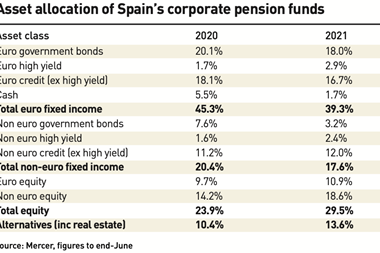The Institutional Investors Group on Climate Change (IIGCC) and the UN-convened Net-Zero Asset Owner Alliance (NZAOA) have separately published big-picture reports aimed at enhancing investors’ contribution to realising international climate change goals.
The NZAOA’s report is a high-level discussion paper calling out the limitations of corporate engagement to argue in favour of complementing this with efforts aimed at changing “the rules of the game”.
“As asset owners, we need to look towards ways we can undertake impactful engagement to directly influence asset managers, stakeholders across entire sectors, and policymakers,” said Günther Thallinger, Allianz SE board member and chair of the NZAOA.
“Regardless of how ambitious investor commitments are, companies still operate within policy and economic frameworks. Systemic change to these frameworks is needed urgently to align with a 1.5°C future, and this new paper presents the case for re-writing the rules of the game to do so.”
The NZAOA proposes that investors with climate ambitions must expand the breadth of their efforts with increased efforts in sector/value chain engagement; policy engagement; and asset manager engagement.
The limits that bound the ability of corporate engagement alone to catalyse necessary systemic change, according to the Alliance, are:
- the significant resources needed for effective corporate engagement;
- a narrow, single company focus;
- the inefficiencies of focusing on voluntary, company-by-company disclosure;
- an uneven investor focus across companies and asset classes; and
- the boundaries set by the rules of the game.
In the foreword to the report, Jake Barnett, of Wespath Benefits and Investments, and Patrick Peura, of Allianz Investment Management, wrote: “By not transparently acknowledging the rules of the game and the bounds of what can be achieved via corporate engagement, as argued by sustainability economist and investor Duncan Austin, investors risk over-allocating resources to ’voluntary market-led’ strategies and thereby diverting resources from contributing to needed structural policy and economic change.”
IIGCC proposes portfolio net-zero contribution tracking
The IIGCC, meanwhile, published a multi-faceted report intended as “a tool to help investor accelerate the energy transition through investment and engagement”.
One part of the report sets out what real economy investments are needed to 2050 at a regional and technology level, with the analysis deriving a set of priority technologies and sectors where investment needs and mitigation potential is largest.
For example, the investment roadmap shows that electricity and transport are the sectors requiring the most investment globally in the 2020s.
The priority engagement activities that are identified relate to policy and regulation. According to the IIGCC, they can be characterised as “technology and market development” and apply to technologies that face barriers to institutional investment in the 2020s, including technological immaturity or an unsupportive policy environment.
“Being able to connect the real world need with portfolio construction – and then measuring contributions – is crucial for investors”
Stephanie Pfeiffer, CEO of the IIGCC
In the IIGCC’s words, the report also addresses “one of the major practical and strategic challenges for institutional investors seeking to play a part in supporting a Paris-aligned pathway: translating real economy need into portfolio allocation”.
To help with this, the report sets out metrics and benchmarks that investors can use to assess the contribution of a portfolio and its assets net-zero emissions reductions. This includes a proposed ‘green investment ratio’ and a ‘priority net-zero investment ratio’.
“We are all aware of the scale of investment required to meet the goals of the Paris Agreement, but being able to connect the real world need with portfolio construction – and then measuring contributions – is crucial for investors,” said Stephanie Pfeifer, chief executive officer of the IIGCC.
“Failure to do so means investors may not contribute optimally towards meeting the current net zero pathway investment gap.”
The IIGCC is looking for feedback from investors on the metrics and to developing these further in the next phase of the project.
Pfeifer added: “The report also highlights the role investors need companies to play in providing relevant climate-related disclosures, for example through metrics such as green capex. Without these, investors fail to have a clear and informed picture of the progress made by underlying companies towards delivery of their transition plans.”
The IIGCC and its new climate solutions working group are now working with FTSE Russell to explore methodologies and options for applying to the listed equity market the net-zero investment trajectories and investment in climate solutions metrics outlined in the report.
The objective of the next phase of work is to help investors operationalise the report’s Paris-aligned investment metrics and trajectories by integrating them into investment processes and the building of Paris-aligned equity portfolios and benchmarks.
Read the digital edition of IPE’s latest magazine













No comments yet